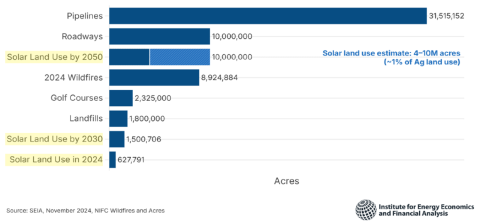Federal Decision to Pay Utilities for Capacity-Performance Scheme Is Not in Ratepayers’ Best Interests
Last week’s approval by the Federal Energy Regulatory Commission of PJM Interconnection’s capacity-performance “reforms” will help companies who own financially struggling coal and nuclear power plants.
But it doesn’t do much for ratepayers, who may end up stuck with paying too much for power under the guise of improved reliability.
The changes to which FERC gave the go-ahead are supposed to incentivize better power plant performance by providing higher capacity payments to generators that can meet certain reliability criteria, and by assessing a penalty on generators that fail to meet standards.
In his dissent to last week’s ruling, however, FERC Commissioner Norman Bay warned that the mechanism may mean that the penalties imposed on generators that don’t perform will turn out to be less than the benefit the generators would receive from the higher capacity prices. In other words, these changes may utterly fail to incentivize improved capacity performance while still costing ratepayers billions of dollars a year.
Overall, the changes are expected to increase the amount of money that goes to generators through the capacity market by $1.4 to $4 billion dollars a year. Those costs will, unfortunately, be borne by electricity customers in PJM—the regional transmission organization that controls the wholesale electricity market in parts of 13 states across the mid-Atlantic and Midwest. PJM ostensibly proposed the mechanism as a solution to the grid distress created by the 2014 polar vortex, when many power plants were unexpectedly unavailable due to fuel shortages or outages caused by the extreme cold.
MORE BROADLY, THERE IS THE QUESTION OF WHY PJM PROPOSED THIS “REFORM” IN THE FIRST PLACE. Although more than a third of outages during the polar vortex were at coal and nuclear power plants, according to PJM’s own numbers, the changes will disproportionately reward these plants. As noted by Commissioner Bay in his dissent, the new mechanism addresses a problem that cost PJM ratepayers about $700 million “with a multi-billion dollar redesign of the capacity market.”
PJM’s capacity-market mechanism is supposed to serve the greater good. Every year, the organization has an auction in which it purchases enough capacity from power plants to meet projected peak demand on the system three years in advance.
The idea is to provide a price signal that will incentivize the construction of new power plant capacity before shortages emerge, but as I noted in December (“‘Reforms’ Across PJM’s 13-State Market Are Costly and Regressive”), that’s not how it has worked. Capacity prices across PJM’s territory have fluctuated so wildly since the market was implemented in 2007 that it has failed to provide the sort of predictable cash flow required to support essential 30-year financing for new power plants.
THE CHANGES WILL ALMOST CERTAINLY PROVIDE A FINANCIAL BOOST TO COMPANIES THAT OWN A LOT OF NUCLEAR AND COAL GENERATION IN PJM—companies like FirstEnergy, Exelon Corp., American Electric Power and Dynegy.
PJM’s capacity market has been criticized often for failing to achieve its stated objective of creating a stable price signal to incentivize new power plant construction where it is needed. While prices have consistently been higher in the eastern part of PJM, most new generation has come online in the western part of the PJM market, contrary to what one would expect if the market were functioning properly.
PJM’s capacity market has proven to be a valuable source of revenue for existing power plants, specifically helping prop up struggling coal plants. It looks like this latest “reform” is more of the same.
Cathy Kunkel is an IEEFA fellow.
















